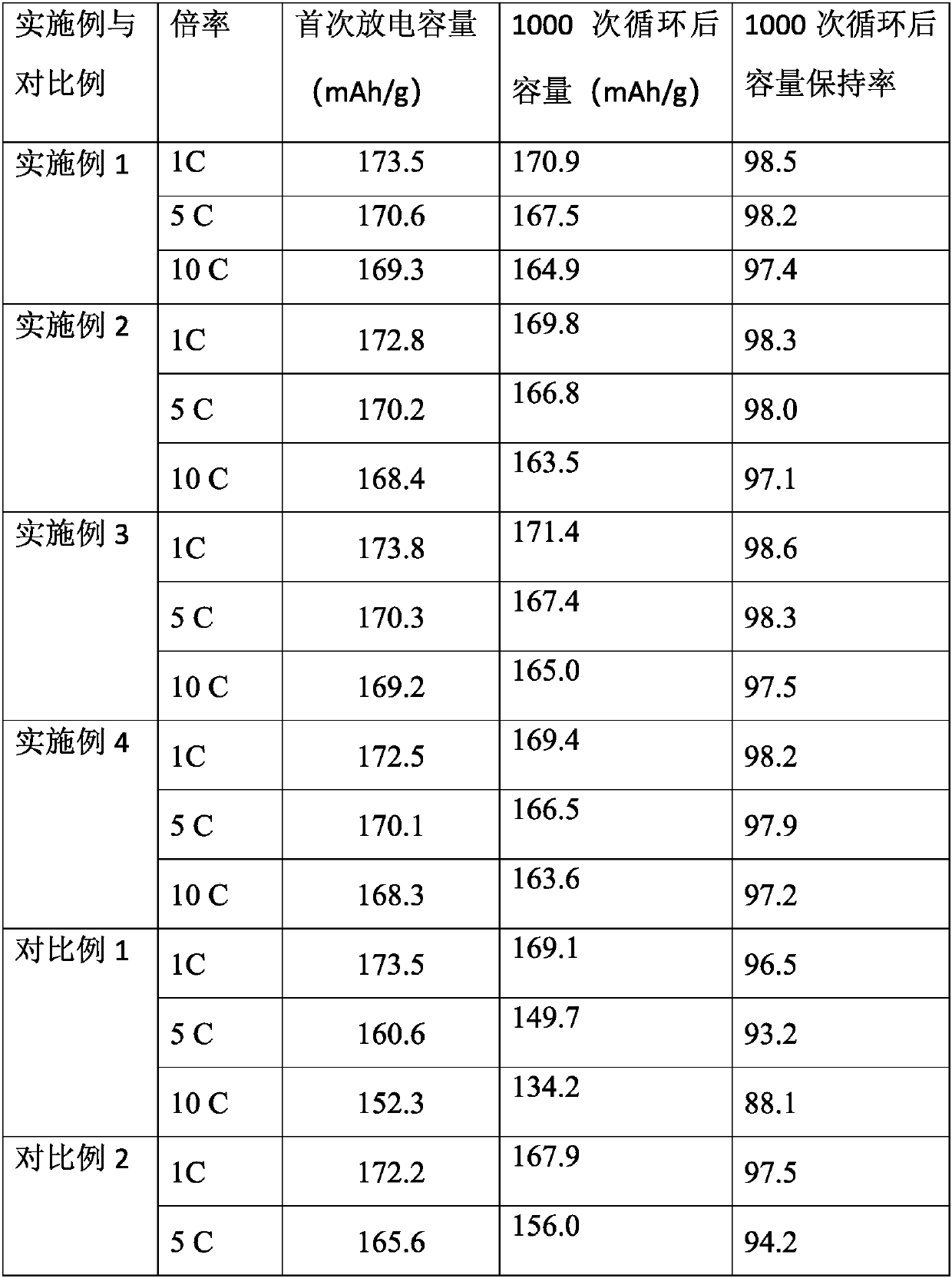Lithium titanate composite negative electrode material, preparation method thereof and lithium-ion battery
A negative electrode material and composite material technology, applied in the field of lithium-ion battery negative electrode materials and their preparation, to achieve good cycle stability, improve electrochemical performance and safety effects
- Summary
- Abstract
- Description
- Claims
- Application Information
AI Technical Summary
Problems solved by technology
Method used
Image
Examples
preparation example Construction
[0054] The preparation method of the lithium titanate composite negative electrode material of the present invention comprises the following steps:
[0055] 1. Preparation of transition metal salt solution
[0056] At room temperature (20°C), dissolve one or more of transition group metals iron, cobalt, nickel, and chromium nitrate, chloride, sulfate, acetate, and oxalate in water, according to 150-740W Ultrasonic power, frequency 28KHz, power density not less than 0.5W / cm 2 , ultrasonically stirred for 0.5-2 hours to make it fully dissolved in water to obtain a transition-group metal salt solution with a concentration of transition-group metal ions of 0.1-10 mol / L. The concentration can be 1 mol / L, 2.5 mol / L, 5 mol / L, 8 mol / L, 10mol / L.
[0057] The preparation of the transition group metal salt solution can ensure that the surface of the MXene is evenly loaded with the transition group metal salt in the liquid phase to prepare for the next step.
[0058] 2. Preparation of...
Embodiment 1
[0089] 1. Dissolve cobalt nitrate in water at a power density of not less than 0.5W / cm 2 , and ultrasonically stirred for 1.5 h to obtain a uniform transition metal salt solution with a cobalt ion concentration of 2 mol / L.
[0090] Second, the Ti 3 C 2 Put it in a vacuum reactor, vacuum it to below 0.08MPa, and press Ti 3 C 2 The mass ratio of the transition metal salt solution to the transition metal salt solution is 0.1:1, and the transition metal salt solution is injected into the vacuum reactor, and the power density is not less than 0.5W / cm 2 , ultrasonically stirred for 1h, then released the vacuum, filtered, and dried to obtain Ti with cobalt nitrate 3 C 2 particles.
[0091] 3. Ti with cobalt nitrate 3 C 2 The particles were put into a quartz tube furnace, filled with nitrogen, the flow rate was 1L / min, the temperature was raised to 600°C at a heating rate of 1.5°C / min, filled with acetylene gas, the flow rate was 5.0L / min, and chemical vapor deposition was obt...
Embodiment 2
[0099] 1. Dissolve nickel sulfate in water, and the power density is not less than 0.5W / cm 2 , and ultrasonically stirred for 1.0 h to obtain a uniform transition metal salt solution with a nickel ion concentration of 0.5 mol / L.
[0100] Second, the Ti 2 C is placed in a vacuum reactor, vacuumed to less than 0.08MPa, and then press Ti 2 The mass ratio of C and transition metal salt solution is 0.1:1, inject the transition metal salt solution into the vacuum reactor, and the power density is not less than 0.5W / cm 2 , ultrasonically stirred for 1 h, then released the vacuum, filtered, and dried to obtain Ti with nickel sulfate 2 C particles.
[0101] 3. Ti with nickel nitrate 2 C particles are put into a quartz tube furnace, filled with nitrogen gas, the flow rate is 1L / min, the temperature is raised to 600°C at a heating rate of 1.5°C / min, filled with acetylene gas, the flow rate is 5.0L / min, chemical vapor deposition is 2h, get Ti 2 C and carbon nanotube composites.
[...
PUM
| Property | Measurement | Unit |
|---|---|---|
| electrical conductivity | aaaaa | aaaaa |
Abstract
Description
Claims
Application Information
 Login to View More
Login to View More - R&D
- Intellectual Property
- Life Sciences
- Materials
- Tech Scout
- Unparalleled Data Quality
- Higher Quality Content
- 60% Fewer Hallucinations
Browse by: Latest US Patents, China's latest patents, Technical Efficacy Thesaurus, Application Domain, Technology Topic, Popular Technical Reports.
© 2025 PatSnap. All rights reserved.Legal|Privacy policy|Modern Slavery Act Transparency Statement|Sitemap|About US| Contact US: help@patsnap.com


